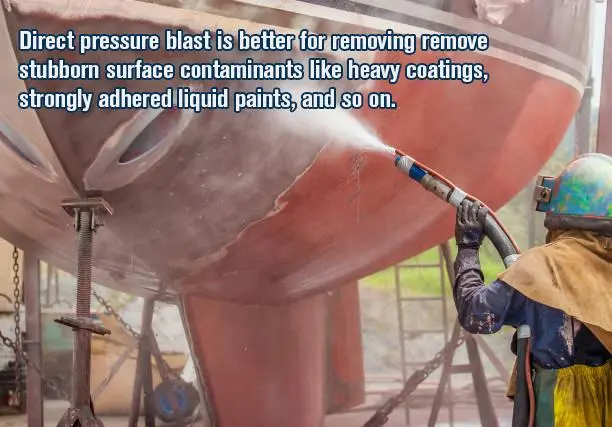Siphon Blast and Pressure Blast
Siphon Blast and Pressure Blast

Sandblasting (also now known as abrasive blasting) is a powerful and effective process. It is the process of propelling that abrasive media with compressed air for cleaning the surface. This cleaning and preparation procedure takes compressed air as a power source and directs a high-pressure stream of abrasive media toward the part to be blasted.
Siphon blast pot and direct pressure blast pot are the two main types of abrasive blasting cabinets that exist on the market. Though they have the same general method in common, there are many differences between siphon blast and pressure blast.
SIPHON BLAST
Siphon blast uses an abrasive media suction gun to siphon, or draw, the abrasive to the blasting nozzle where it is then boosted in particle velocity and injected into the cabinet. This type of operation is relatively affordable, and it can be used continuously as the abrasive can simply be recollected and placed back into the reservoir. Siphon blast pot is mostly used for light production jobs and general cleaning of parts and objects. If you have a small area to try to sandblast and what your blasting off is not too strongly adhered a siphon blast pot may work.

DIRECT PRESSURE BLAST
Direct pressure blast uses a pressure cabinet or pot to pneumatically push the abrasive to the nozzle. With direct pressure, the abrasive has no delivery weight so it travels faster and faster inside the abrasive hose until it passes out the nozzle office. The increased force that media will impact the surface allows you to finish work faster, it also enables you to remove stubborn surface contaminants like heavy coatings, strongly adhered liquid paints, and so on. Direct pressure has a more focused patter which makes it create higher frictional heat than siphon systems and delivers abrasive at about twice the speed of siphon delivery methods. Cabinets using direct pressure operate on less compressed air and produce more frictional heat than siphon types. This allows direct pressure to do things siphon is unable to do. As direct pressure provides a more focused pattern of abrasive delivery, it is better to remove stubborn surface contaminants like heavy coatings, strongly adhered liquid paints, and so on. And the direct pressure can push abrasive through drilled holes by using the part as the blasting nozzle. A siphon can’t continue abrasive delivery when the nozzle is held close to the part surface or against a drilled hole.

FINAL THOUGHTS
The direct pressure blaster achieves the greatest versatility, speed, and effectiveness. However for small touch-up blast work or when the budget is a concern and the job is not very big, then a siphon blast pot is a good choice.
Well, BSTEC also provided high-quality blasting nozzles and accessories for both types.













